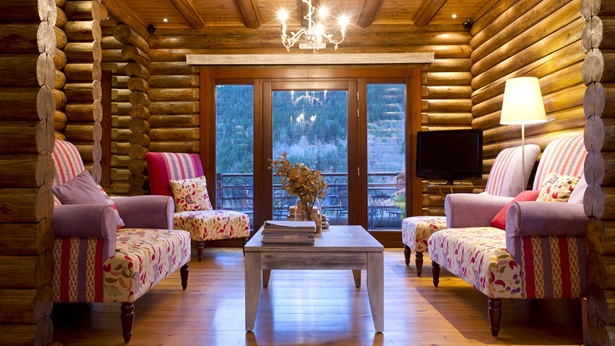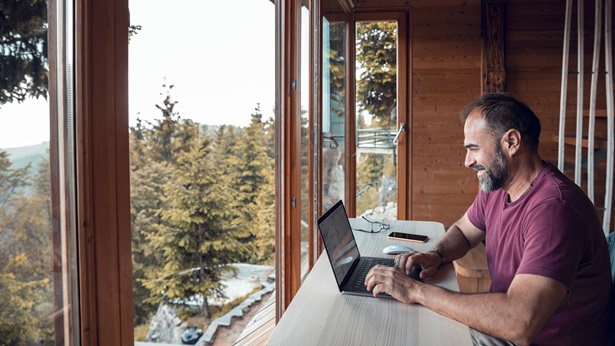8 Strategies for Reducing Construction Costs
In addition to being a motivation for much of what we do, money is energy. It enables us to go places and do things, including taking care of our families or buying and building a new home. Most of us have a finite amount of this energy, mainly through long years of hard work, patient savings and perhaps the sale of a conventional home.
Now you’re ready to use all that energy to create your dream home. But is it enough? Where can you conserve? That’s why the Log and Timber Homes Council created this Buyer’s Guide, to help consumers make wise choices on the Perfect Path to Your Dream Home.
Begin by sitting down with a lender who specializes in log and timber homes to discuss financing options. By being pre-qualified by your lender, you will how know exactly much energy you have to work with.
How Much Do Professional Builders Spend?
What to the pros typically spend on new home construction? Are there any ballpark figures out there that can help you see if anything is out of line? Indeed there is.
The total cost of an average new home in the U.S. breaks down thusly, according to the 2004 Cost of Doing Business Study: The Business of Building, published by BuilderBooks.com, a division of the National Association of Home Builders (NAHB).
- Finished lot costs 20-25% of the total selling price, with half of that reflecting infrastructure costs, such as utilities and driveway.
- Building materials, everything from foundation and flooring, to porches and roofs, cost 25-30% of the total.
- Onsite labor costs 20-25%.
- General overhead is about 6%.
- Financing costs are about 2%.
Thinking of being your own general contractor to save money? Small-volume builders (constructing an average 4.9 homes a year) who built exclusively on their clients’ land had average gross profit margin of 18.9% and an average net profit of 4.8%, according to the study.
If you decide to build your own home, you won’t earn all of that 4.8%. You will pay far more for labor, since subcontractors will see you as a one-time job and price their services accordingly. You will also pay more for specialty tools needed in log construction. Professional log and timber home builders pro-rate their tools costs over several jobs. You will also pay more for insurance, since insurance companies will see you as a greater risk. It’s also almost guaranteed you will make costly mistakes that pros won’t, which will cost you more in time, materials and labor.
Value Engineering
Want to do more with less? This is called value engineering. Your log and timber home producer and builder have an assortment of cost cutting tricks. Use their expertise. Simply communicate that you need to save money on your budget. They can provide all kinds of helpful advice, including:
- Reducing Square Footage
One way to dramatically reduce costs is to just reduce the square footage of the entire home. Think small and cozy to slash costs. Another smart strategy is to build upward with a two-story design rather than outward, such as with a ranch design. - Choosing a Stock Design
Custom designs cost more in design time, materials and labor. Most log and timber home manufacturers have dozens of stock plans that they have built time and time again. Many errors have been eliminated in these designs, which makes them go up smoothly, saving you time and money. - Reducing Lineal Feet of Logs
Adding decorative stone, cedar shake or stucco can actually accent logs and reduce costs. - Opt for a Simple Roof System
The roof is one of the most expensive material and labor line items in your budget. This is why the simpler the roof system, the less expensive it will be. The most inexpensive roof is a simple, single ridgeline with a shallow pitch. More complicated roof systems, called hips and valleys with a steeper pitch, are more visually interesting. But they are also a lot more expensive. - Use Drywall on Interior
Pine paneling on the interior of your ceiling looks great. However, it’s roughly twice the cost of drywall—and cedar paneling is even more expensive than pine. - More Modest Kitchen
If your marriage can take the heat, down grade your kitchen appliances and amenities. Almost everything in a kitchen can be upgraded later, including flooring, appliances and cabinetry. - Don’t Take a Bath on Your Bath
Much like kitchens, bathrooms have a variety of materials that can be upgraded later. If you want that jetted tub in the master bath but can’t afford it now, specify a soaking tub of the same size from the same manufacturer. Swapping it out in the future will be a snap. - Avoid Change Orders
Last minute changes in design or materials are called “change orders” and they can quickly take a toll on your budget. Save these for correcting any serious errors.



